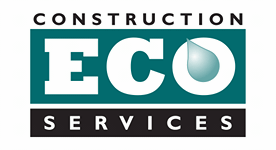The Rise of A New Specialty Contractor
The stormwater and site utility trade is typically one of the slowest moving groups in the construction industry in regards to adaptation of new technologies. As project site constraints become tighter, detention rates increase and real estate prices continue to soar, stormwater regulations play a larger role in the overall economic decisions of the property. This is especially true as more underground detention product lines come to market promising to increase lot yield and expedite the developers return on investment. The challenge with underground detention is that not many utility contractors have the experience necessary to do these projects within specification, on time and within budget.
The result is the rise of a new specialty contractor in an industry that really needs one. When you are placing cars and heavy loads over an underground detention system it is imperative to know and trust that your contractor is installing the system in accordance with the manufacturer’s specifications. Something as simple as proper compaction of the backfill or placing too much/too little cover over a system can result in degradation of the overall system and possibly a complete failure. When choosing a sub-contractor for your next underground detention system there are some key questions to ask before you get started.
- Has the contractor installed the engineered specified product before?
- Has the contractor spoken with the manufacturer’s representative and discussed the complete installation manual?
- Does the system require any other trades for completion, what is the duration for completion of the project?
- Can your contractor provide a turnkey proposal on the whole system?
- What material are you backfilling with and does that meet the manufacture specifications?
I know this seems like a lot to process and many contractors have a site or utility contractor they already work with, but if they don’t have the experience installing a specific manufacturers product you could be setting your site up for problems down the road. It may not seem like much when there are so many similar subsurface detention systems, but all of them have slight variances and no two are truly the same, no matter how similar they look.
One of the quickest ways to manage the risks above is to work with a contractor that has experience installing the subsurface stormwater detention manufacturer that has been specified. A contractor should be able to excavate and haul off spoils within the proper parameters of the allotted footprint, install all secondary drain lines, set the base properly for the system, install the manufactured product within the allowable specifications of the engineering guidelines, install any or all geo-textiles needed for the system, backfill and compact an assortment of different materials correctly, install geo-grids to manufactures specifications, and finally hit the correct elevations needed to make the system work and ready for concrete.
When selecting a subcontractor I suggest asking the supplier for recommendations of subs who have installed their product line. As this will help eliminate many possible hiccups along the way and help keep your project on time, on budget, and within the manufacturer’s specification.









